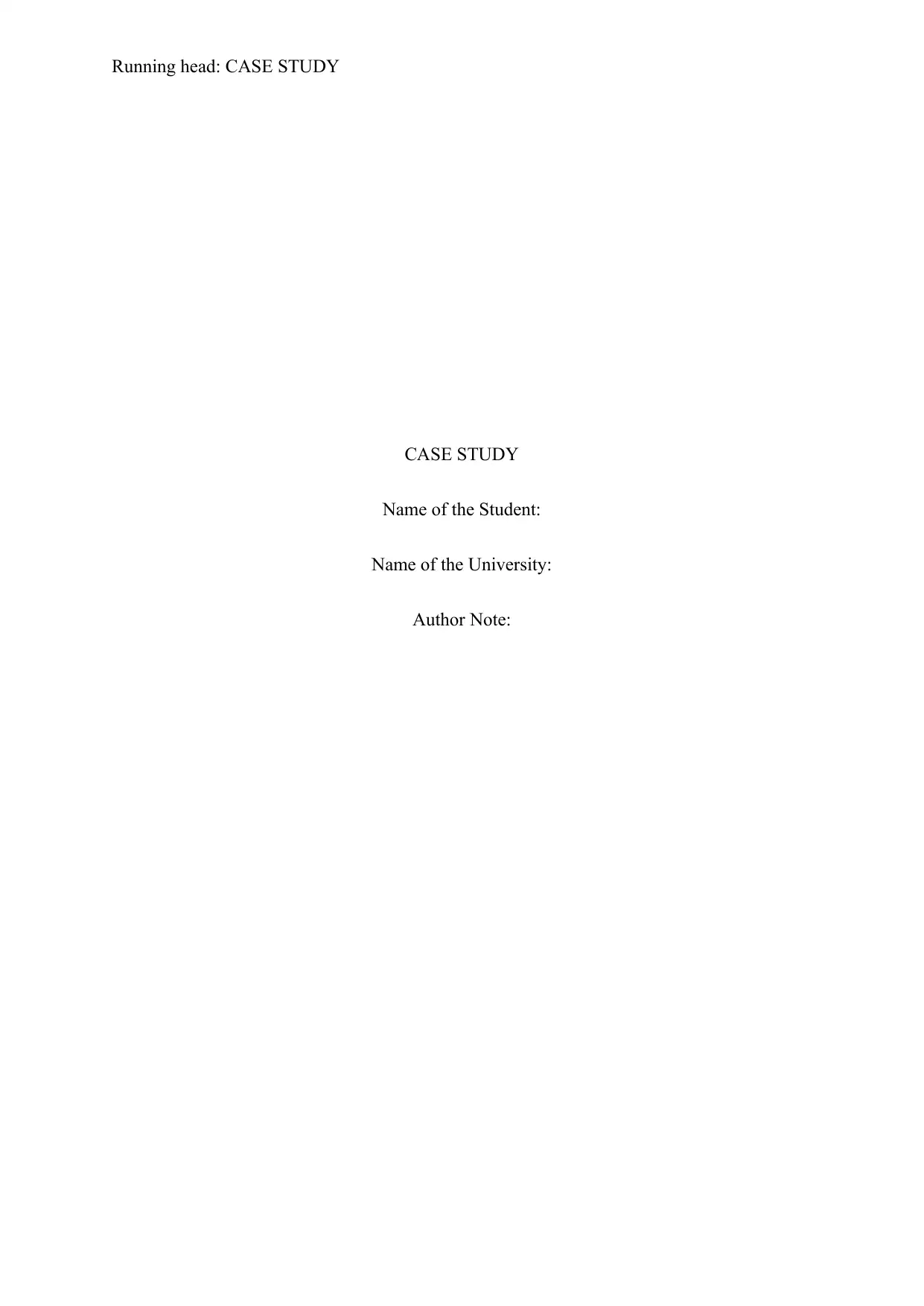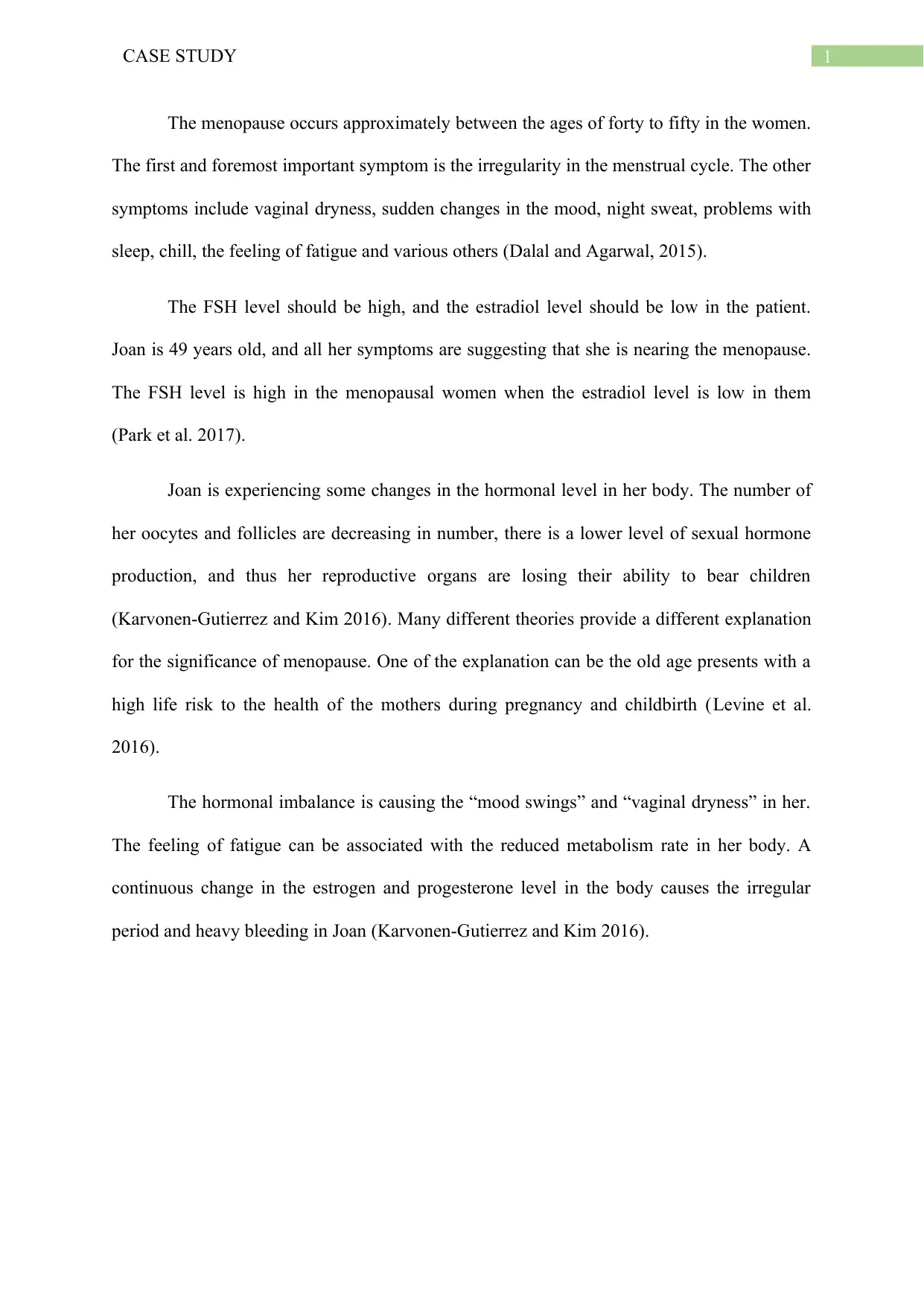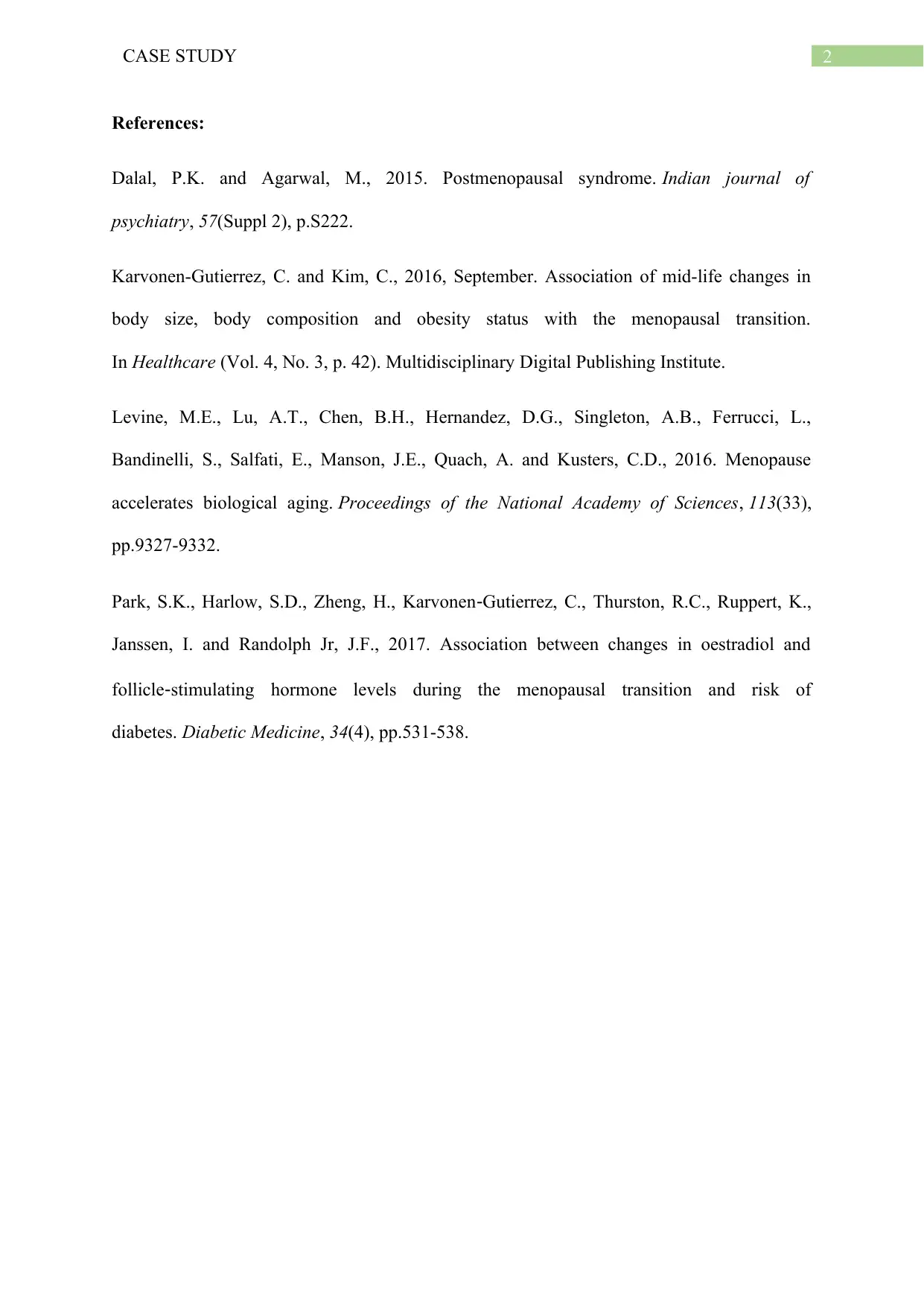Case Study: Menopause - Analysis of Symptoms, Hormones, and Theories
VerifiedAdded on 2022/09/16
|3
|524
|23
Case Study
AI Summary
This case study focuses on a 49-year-old woman, Joan, experiencing symptoms indicative of menopause, including irregular menstrual cycles, mood swings, and vaginal dryness. The study highlights the hormonal changes associated with menopause, specifically the elevation of FSH and the decline of estradiol levels. It discusses the impact of these hormonal shifts on the reproductive system, including the reduction in oocyte and follicle numbers, and decreased sexual hormone production. The study also explores different theories regarding menopause, such as the increased health risks associated with pregnancy and childbirth in older women. Furthermore, it connects Joan's symptoms, like fatigue, to changes in metabolism and the impact of fluctuating estrogen and progesterone levels on her menstrual cycle. The provided references offer additional insights into the subject, covering aspects like postmenopausal syndrome, the relationship between body composition and menopausal transition, the impact of menopause on biological aging, and the connection between hormonal changes and diabetes risk.
1 out of 3






![[object Object]](/_next/static/media/star-bottom.7253800d.svg)